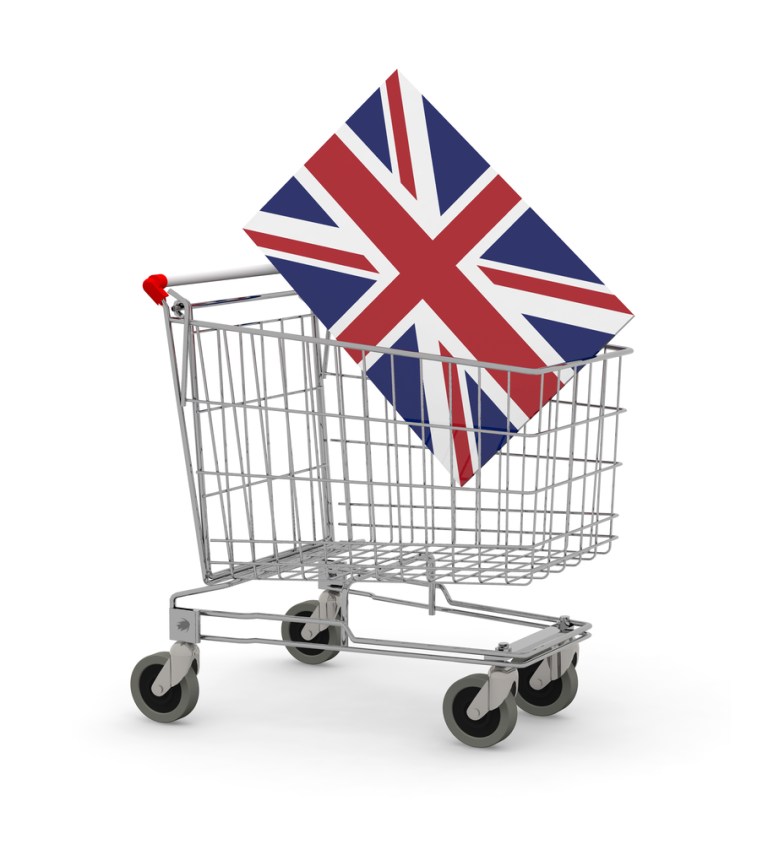
Online retail sales in the U.K. have seen a lot of action over the past six months.
As we reported back in January, the U.K.’s eCommerce sales have seen a significant year-over-year increase. Between 2015 and 2016, U.K. eCommerce sales saw a nearly 16 percent increase from £114.75 billion all the way up to £133 billion. Stemming from Interactive Media in Retail Group’s research, eCommerce sales in the U.K. are set to see a 14 percent increase by the end of this year.
The drivers of the U.K. shopper’s increased interest in online purchases seems to be twofold — cashless purchases and smartphone payments.
Initially, people in the U.K. have doubled the amount of cashless payments within the past decade due to the increased use of debit and credit cards, according to the UK Cards Association (UKCA) research we shared last week. From 2006 at 6.7 billion purchases to 2016 at 16.4 billion, U.K. citizens are spending less physical cash and moving their buying efforts to the online world.
Helping to drive those purchases is the increased popularity of shoppers in the U.K. turning to the online arena and cashless options. UKCA research showed 39 percent of all its retail buying occurred through eCommerce and cashless payments up from 24 percent the prior year.
The rise of connected phones has given way to U.K. shoppers turning to these devices at a higher rate than before for their shopping needs. According to eMarketer’s latest research, 58.6 percent of the U.K.’s digital buyers over the age of 14 will participate in eCommerce purchases during the 2017 year.
The projected £16.42 billion in retail eCommerce sales predicted for the region this year will give 46.5 percent of retail eCommerce sales to smartphones. Smartphone eCommerce sales in the U.K. may go up to as much as £35.31 billion by the end of this year, which is a large chunk of the overall projected £81.55 billion British eCommerce retail sales pie. By the year 2021, eMarketer is predicting smartphone sales will make up £58.50 billion on its own.
eMarketer’s senior analyst, Bill Fisher, commented on the rise of U.K. shoppers’ smartphone buying patterns and what’s causing the change. He said, “UK consumers are becoming ever-more comfortable using their mobile devices, and particularly smartphones, for retail purchases. The slowly rising use of mobile payment options is adding a bit more fuel to the fire. The more comfortable people become using their smartphones for payment in a retail environment, the more likely they are to use them for retail shopping and buying more generally.”
While eCommerce sales have seen a significant upswing in the U.K., online shopping has seen its fair share of news this past week.
Ahead of the holiday season, UPS is sharing news that it will be imposing a surcharge on deliveries in the U.S. With the rapidly increase of eCommerce packages coming through their services, the UPS is trying its best to combat the rising costs of its business. Shoppers in the U.S. should therefore expect to see a 27 cent surcharge per package during Nov. 19 to Dec. 2 as well as between Dec. 17 and Dec. 23 this year.
Jeffries analyst Jonathan Petersen recently shared that while retail sales are not on the decline and are merely shifting to eCommerce, the retail industry itself is starting to run short on warehouse space. As of right now, eCommerce sales make up 10 percent of all retail sales, but Petersen said if that doubled, 600 million square feet of new warehouse space would be needed to accommodate all of the online sales.
One of the larger eCommerce stories came from eBay as the online marketplace announced its plans to up its game with a new price-matching program. Dubbed the Price Match Guarantee, eBay will now allow its eCommerce shoppers to get the lowest price of any identical item found cheaper on another website.
As Amazon and Walmart continue to duke it out in the eCommerce Wild West, we may begin to see more acquisitions push forward the notion of just a few retail players controlling the entire online shopping game. We’re looking at you too, Google.